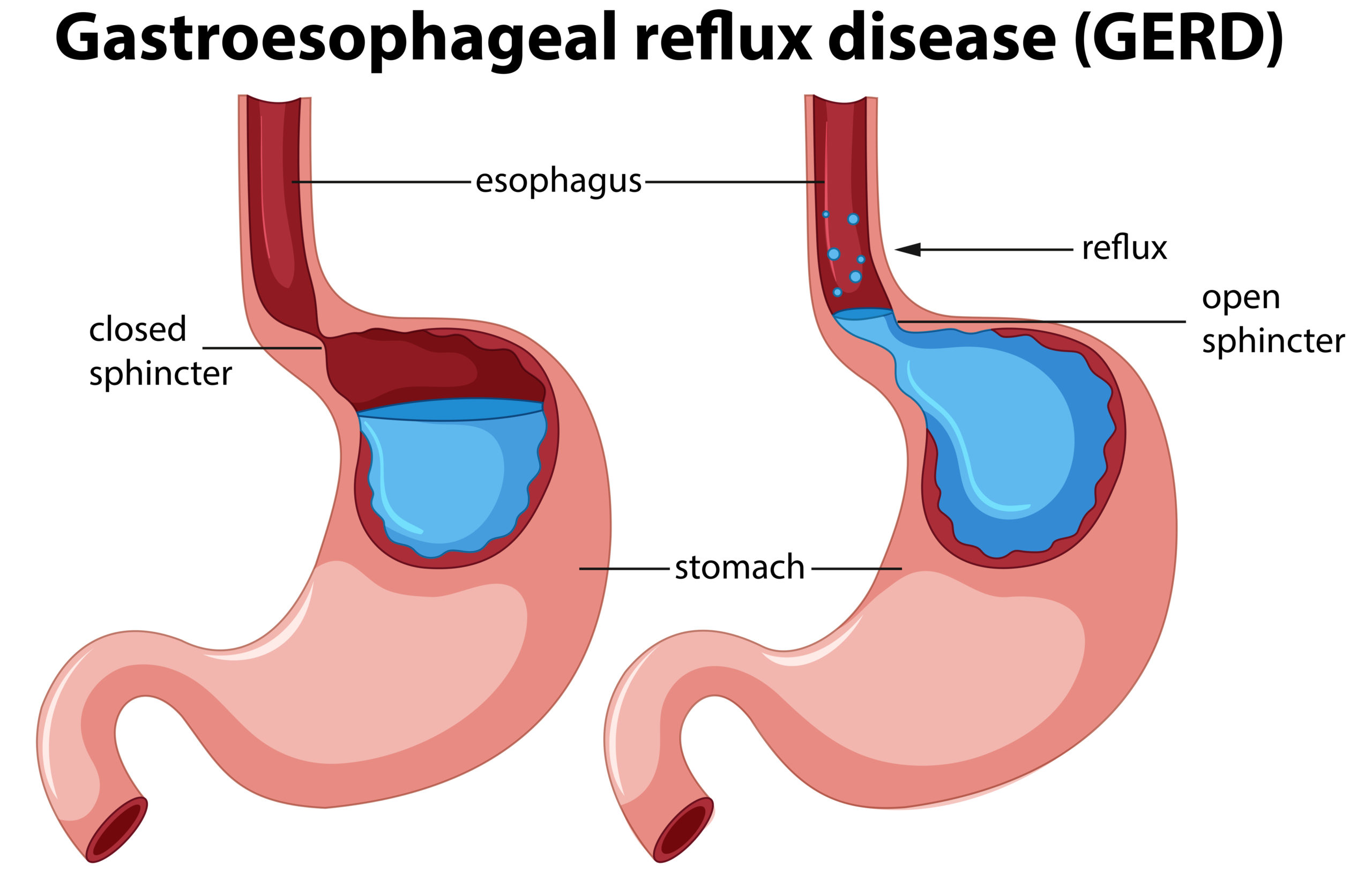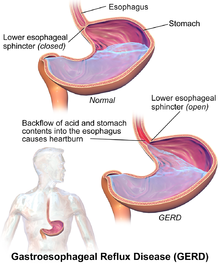
Gastroesophageal reflux disease (GERD) is a more serious and Complicated form of common gastroesophageal reflux (GER).
This a condition in which the food or fluid content of the stomach regurgitates (backs up or refluxes) into the esophagus. This can be due to not proper working of the lower esophageal sphincter, transient lower esophageal
sphincter relaxation, The food or fluid can inflame and damage the lining (causes esophagitis) of the esophagus. The regurgitated liquid usually contains acid and pepsin that are produced by the stomach. The refluxed liquid
also may contain bile that has backed-up into the stomach from the duodenum. (The duodenum is the first part of the small intestine that attaches to the stomach.) Acid is believed to be the most injurious component of the refluxed
liquid. Pepsin and bile also may injure the esophagus.
GERD is a chronic condition. Once it begins, it usually is life-long. If there is injury to the lining of the esophagus (esophagitis) even after the esophagus has healed with treatment.
Proper lifestyle and eating Habits should be a carefully applied in Daily routine otherwise symptoms will be back in short Span.

Then a proper and Specific Treatment will be Determined on basis of your Age, overall health, extend of condition, Tolerance for specific medications, procedures, therapies and Medical History.
Copyright © 2022 Astha Surgical Hospital. All Rights Reserved Design by business7days